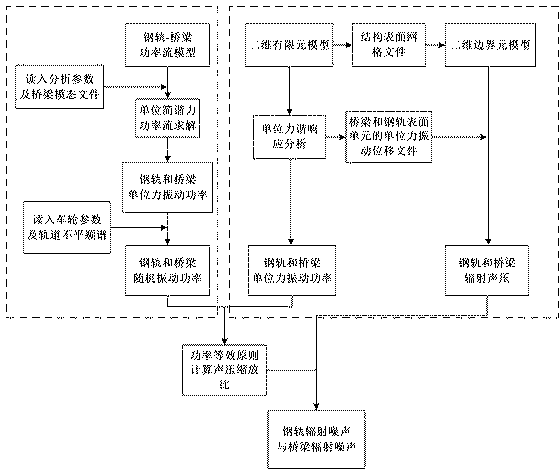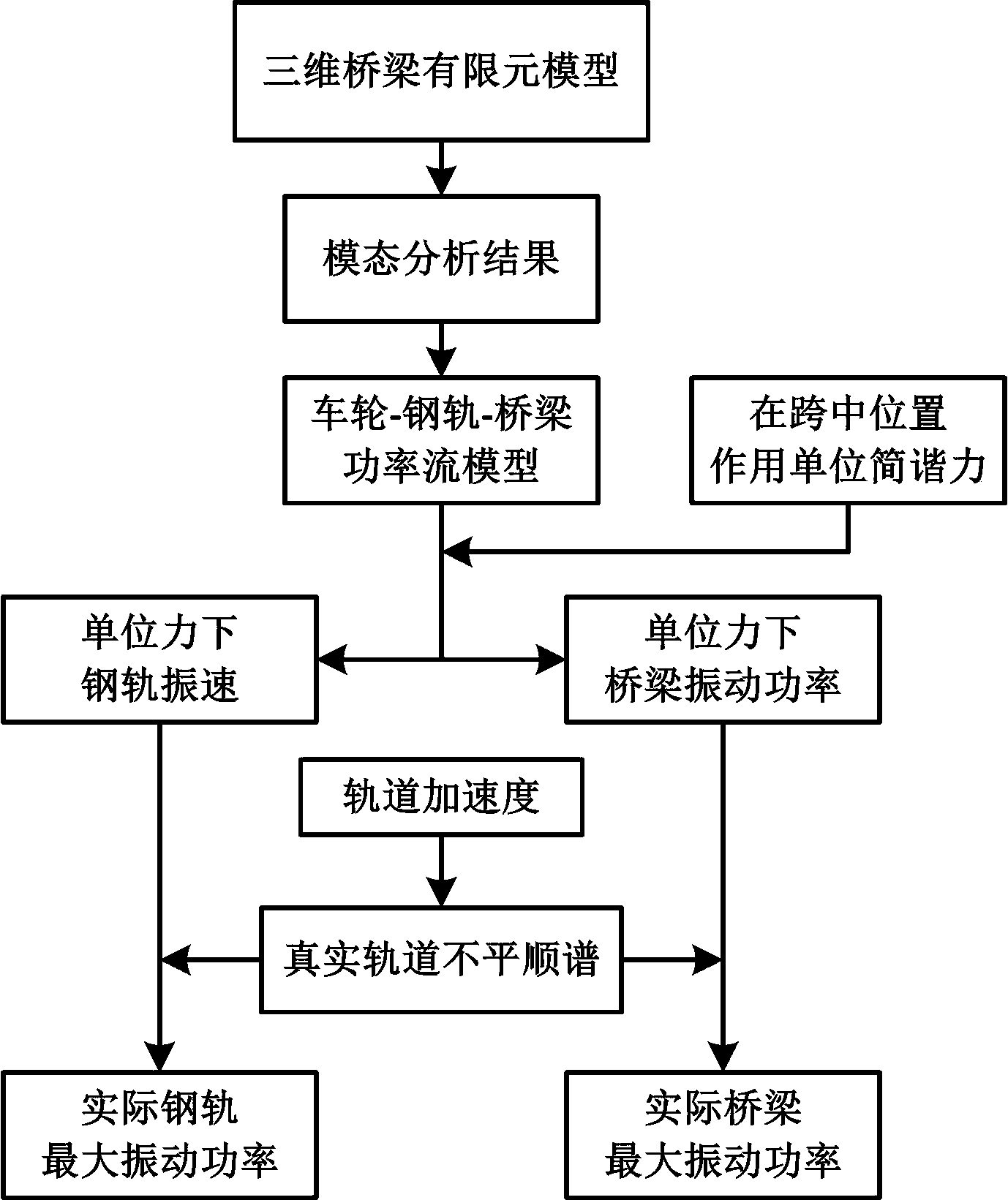Power flow-boundary element model based elevated rail traffic vibratory-noise simulating and predicting method
A rail transit, simulation and prediction technology, applied in special data processing applications, instruments, electrical digital data processing, etc., can solve the problem of heavy noise pollution on elevated lines
- Summary
- Abstract
- Description
- Claims
- Application Information
AI Technical Summary
Problems solved by technology
Method used
Image
Examples
Embodiment 1
[0041] In this embodiment, the flow chart of the noise simulation and prediction method for elevated rail transit based on the power flow-boundary element model is as follows Figure 1~4 shown. Firstly, the parameters of rail transit noise simulation prediction are selected, and a three-dimensional finite element model of the bridge is established to obtain the bridge modal file, which is input into the track-bridge power flow model, and the unit simple harmonic force of different frequencies acts on the track span, and the track and bridge are calculated. The vibration power under the action of unit simple harmonic force, combined with the combined wheel-rail roughness spectrum and vehicle parameters, calculates the wheel-rail contact force spectrum under the wheel-rail-bridge coupling system, and then obtains the bridge and track vibration under random wheel-rail force State; after that, establish the two-dimensional finite element model of the track and bridge, apply the un...
PUM
 Login to View More
Login to View More Abstract
Description
Claims
Application Information
 Login to View More
Login to View More - R&D
- Intellectual Property
- Life Sciences
- Materials
- Tech Scout
- Unparalleled Data Quality
- Higher Quality Content
- 60% Fewer Hallucinations
Browse by: Latest US Patents, China's latest patents, Technical Efficacy Thesaurus, Application Domain, Technology Topic, Popular Technical Reports.
© 2025 PatSnap. All rights reserved.Legal|Privacy policy|Modern Slavery Act Transparency Statement|Sitemap|About US| Contact US: help@patsnap.com



